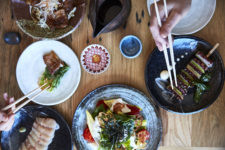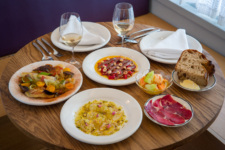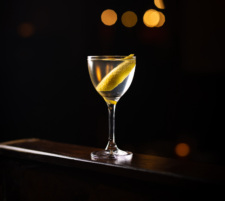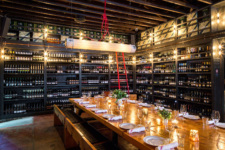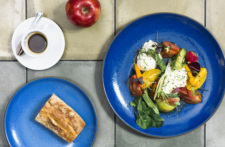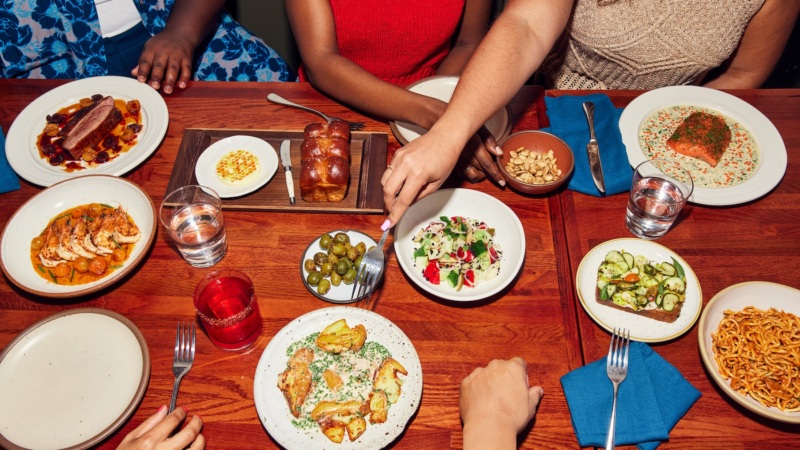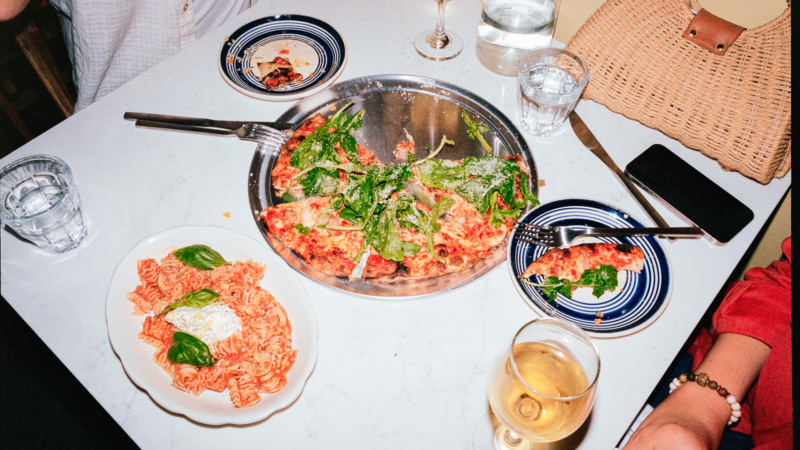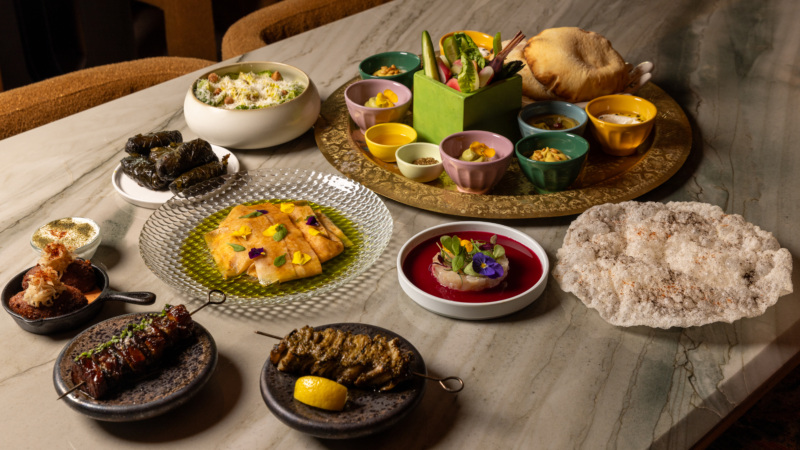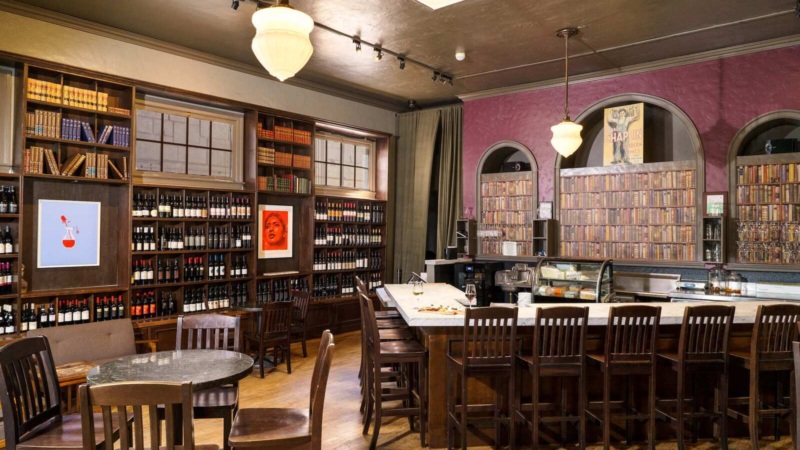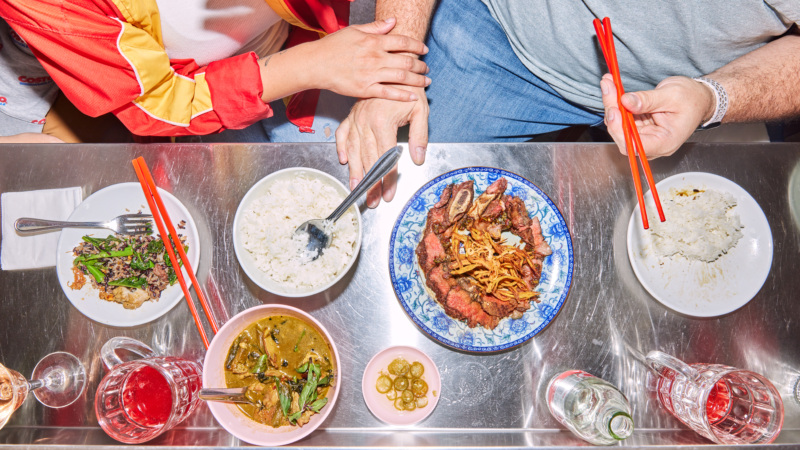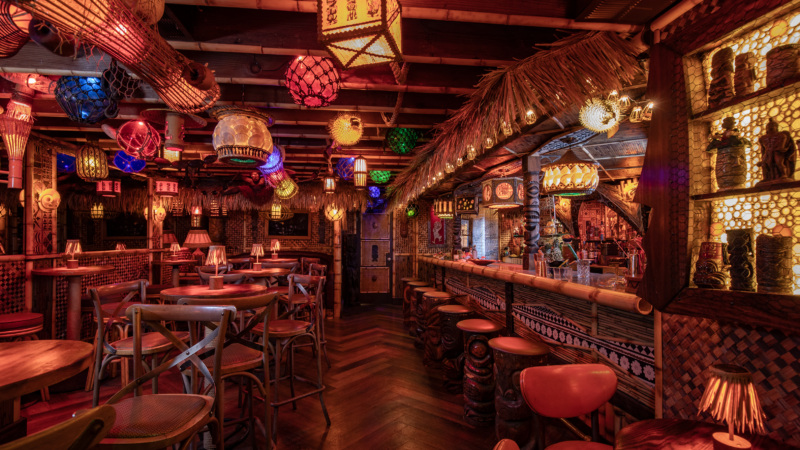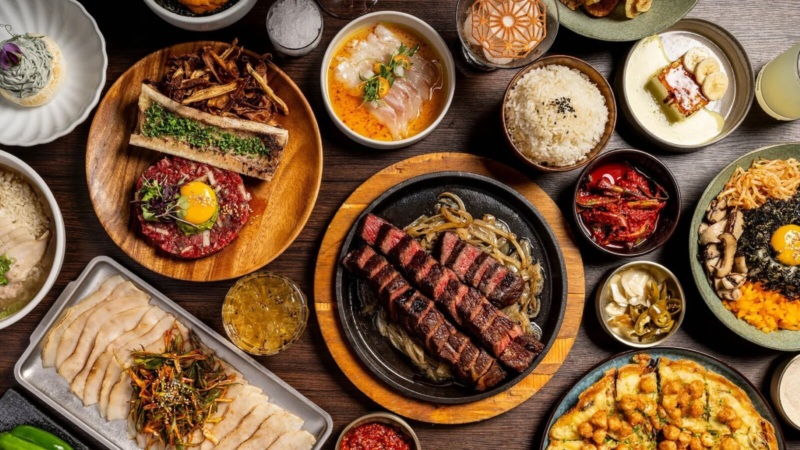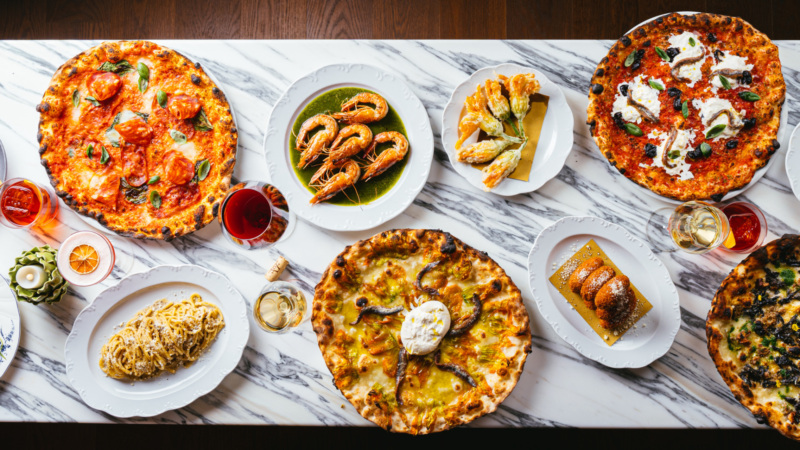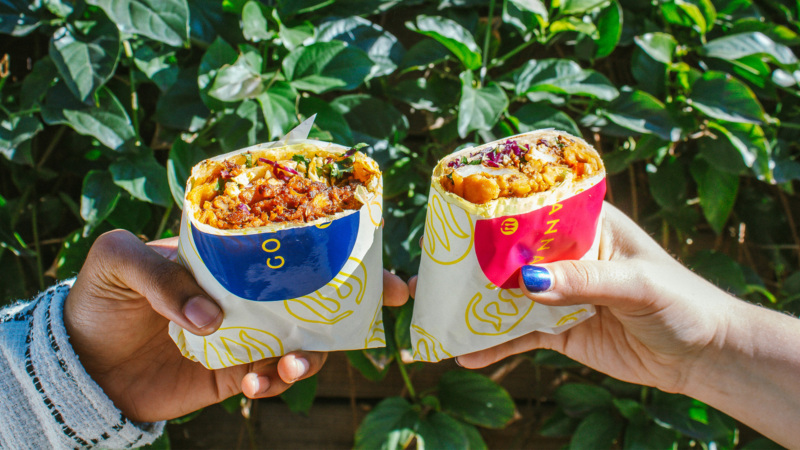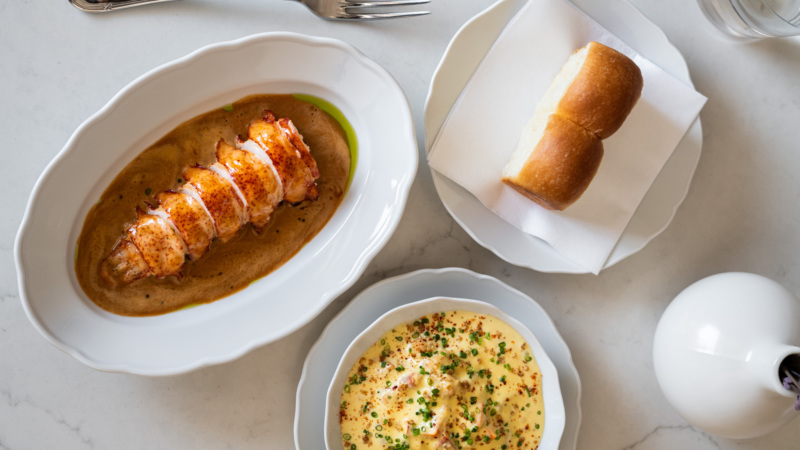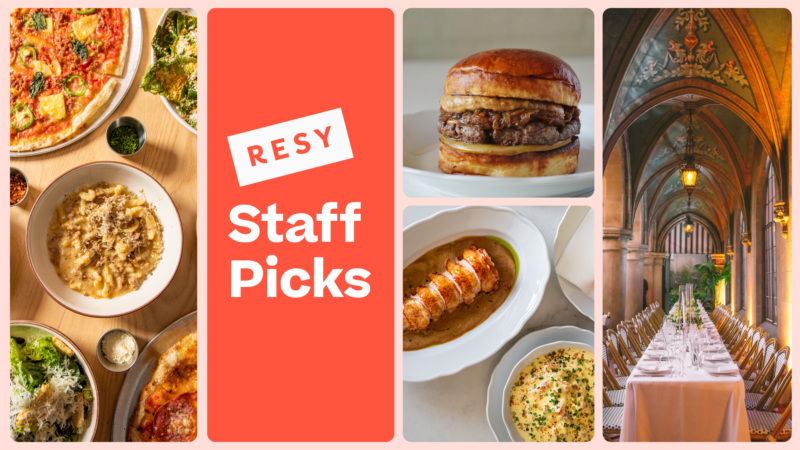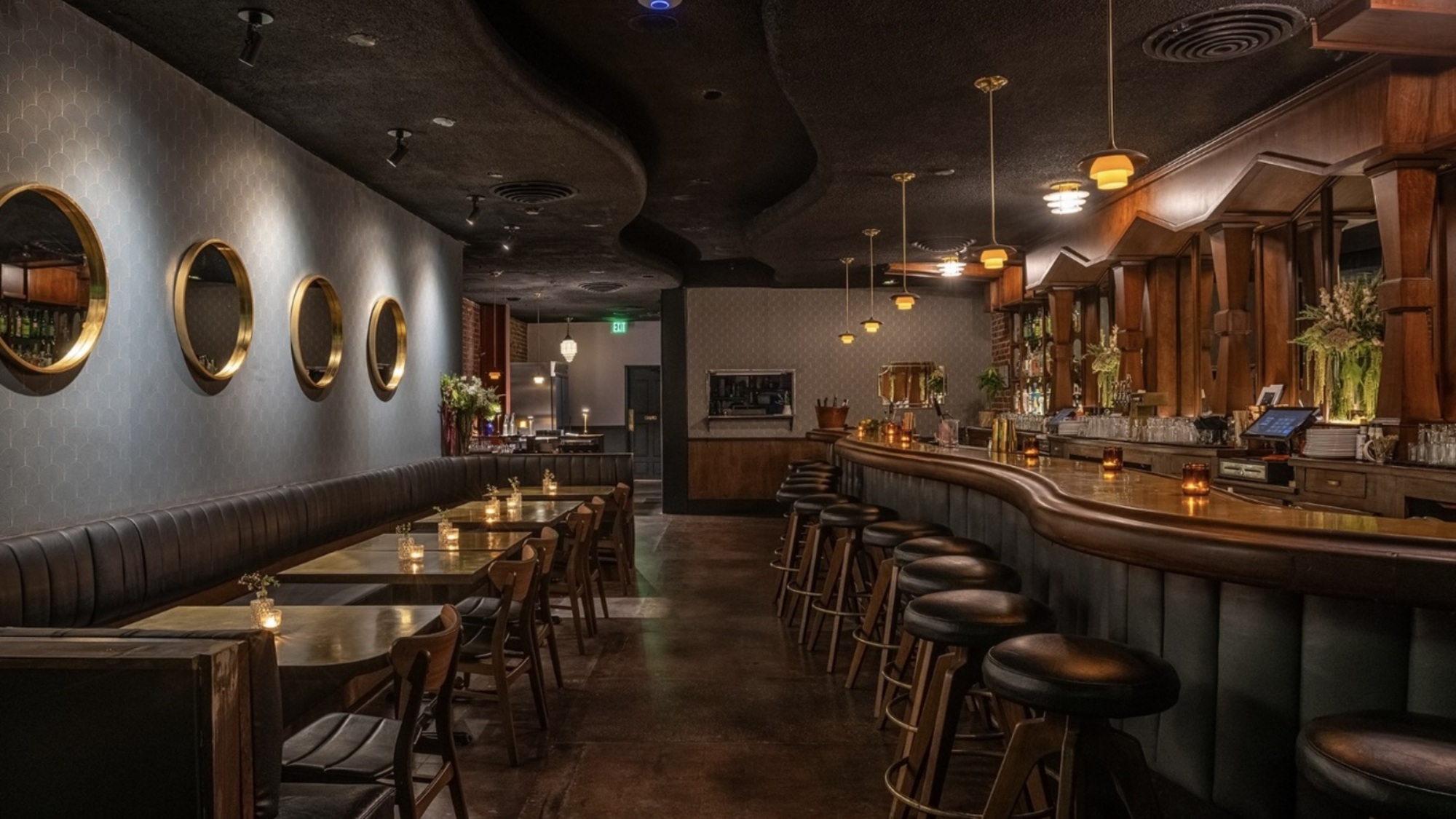
Letter of Recommendation Los Angeles
The Triumphant Return of the Airliner, Now Home to Bar Food Unlike Any Other in L.A.
I love a good neighborhood bar. As a young man, I lived in Brooklyn, renting a series of apartments that were, not coincidentally, situated directly above two exemplars of the form. That was a selling point for me: dim lighting, solid tunes, chill vibes, friendly staff, neighborhood regulars, and, of course, free-flowing drinks, all located right downstairs. As far as I was concerned, there was nothing better than having my local watering hole within walking distance of my bed.
I’ve lived in Los Angeles for a while now. It’s a city filled with superb drinking establishments, but I’ve never felt the desire to live above any of them. Then I walked into the Airliner.
It’s one of L.A.’s oldest bars, in one of the city’s oldest neighborhoods, with a solid list of tiki-inspired cocktails, natural wines, and craft beers (plus some Miller High Life for good measure). It checks all of my boxes, but what really tips me over is what comes out of the kitchen. The Airliner has one of the most compelling bar menus in the city, courtesy of a chef I crossed paths with back in my East Coast days.

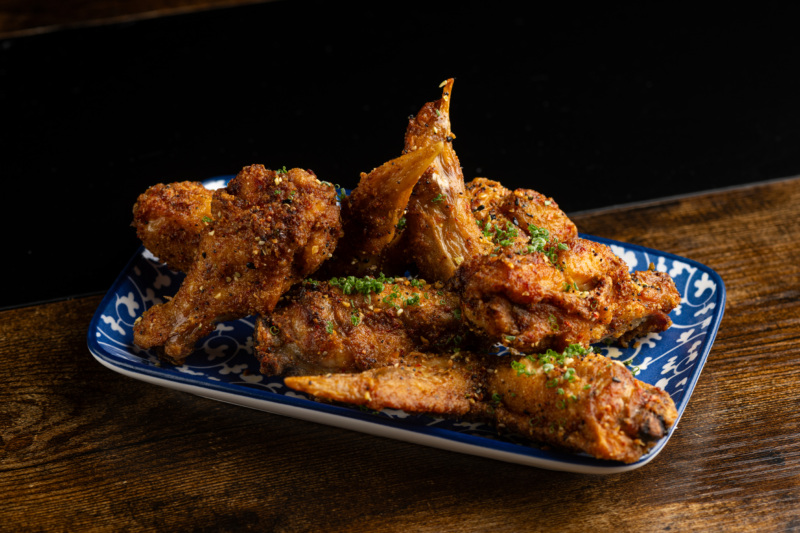
“The bar here is a sister to the kitchen,” bar manager Liana Vasserot tells me. “It’s a food-driven cocktail menu, because the food here is really the star.”
The Airliner bills itself as a “pan-Asian izakaya,” but to me it’s a proper nhậu spot. Nhậu is one of those Vietnamese words not easily translated into English. It basically means to sit, drink, and eat while carousing for hours with friends. Growing up, the nhậu table was where dads and uncles gathered loudly all night. It’s a rite of passage of sorts for a young man to get invited to sit, and to be “initiated” via Cognac. (Lots of Cognac.)
When I say this to the Airliner’s chef and co-owner, Vinh Nguyen, his smile widens. “We serve Asian comfort food here, but, yeah, it’s really just a bunch of dishes we love to eat when we’re drinking,” he says with a laugh.
I first encountered Nguyen back in Brooklyn. It was 2007, and I was a Vietnamese American kid homesick for my mom’s cooking. Nước Mắm wasn’t easy to find back in the aughts. Back then there was only one spot: Silent H. It belonged to Nguyen, a fellow twentysomething Vietnamese American kid, who happened to be a second-generation chef. (To help her family, Nguyen’s mother dropped out of school at age nine and cooked in street stalls before moving into restaurant kitchens.) His restaurant’s name was a play on how he spelled Vinh for other people: “V-I-N, silent ‘H.’”
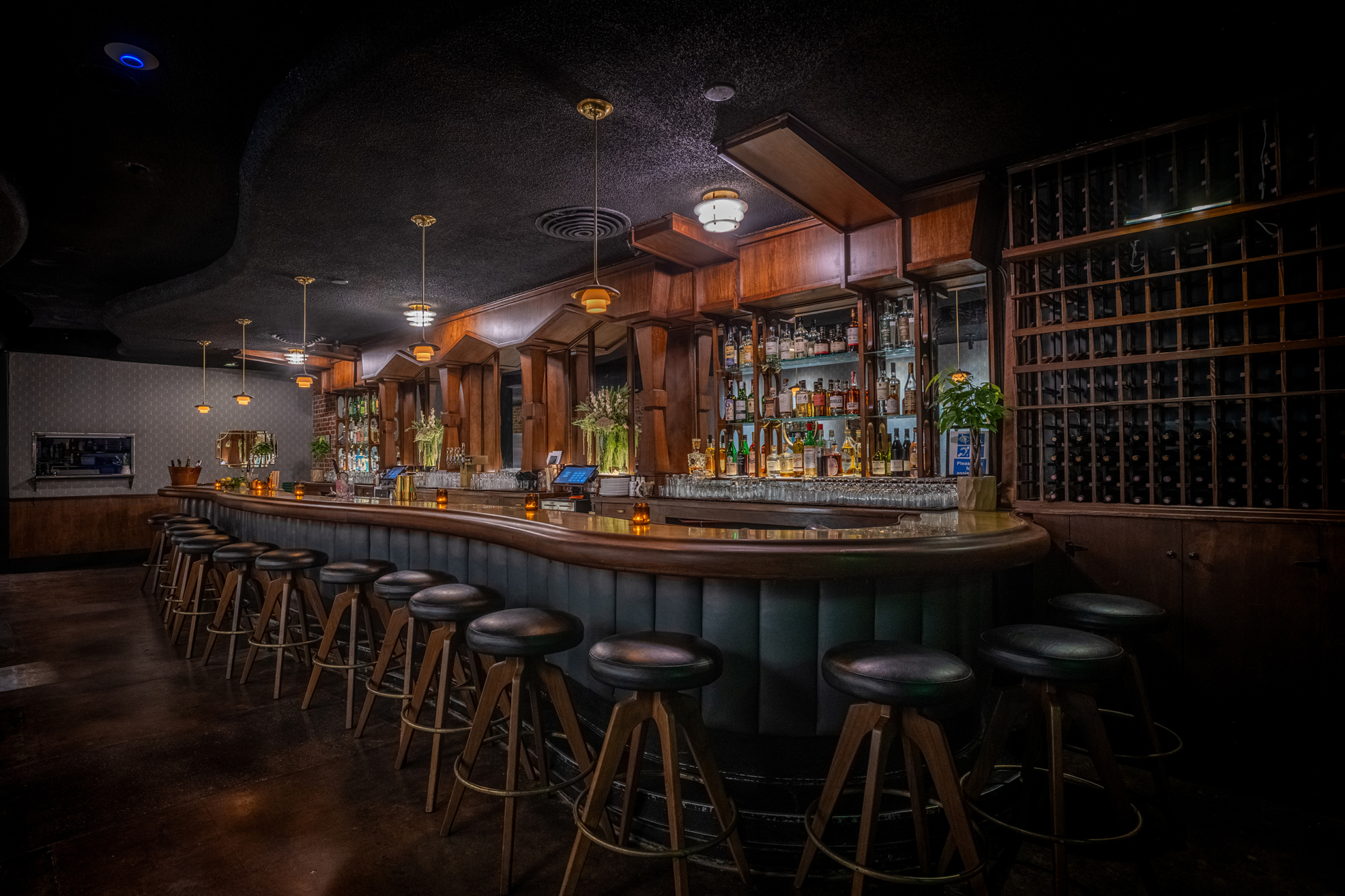
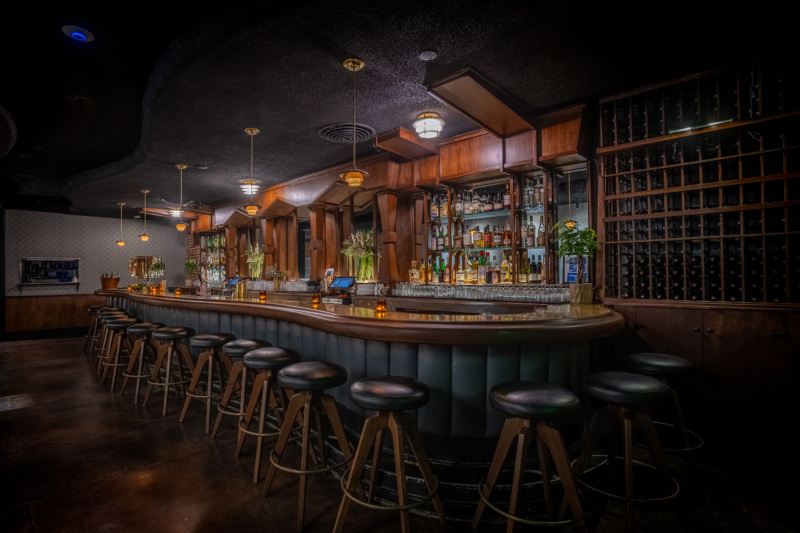
Nguyen initially grabbed my attention with a grilled pork chop that was a clever, yet satisfyingly familiar take on one of the ultimate Vietnamese comfort foods: thịt kho, a braised pork dish flavored with fish sauce, coconut juice, garlic and onions. I became a Silent H regular. In a short period of time, the restaurant attracted a lot of other people’s attention too, including the likes of the New York Times, who featured Nguyen’s riffs on bánh mì. (“Another silent ‘H’ word,” he’d tell me.) Unfortunately, the 2008 global financial collapse hit Silent H hard, and it eventually closed.
Many years had passed when Nguyen and I met up again at the Airliner. We had both grown into middle age, started families, migrated all across the country, and worked long hours in the hospitality industry. Nguyen put time in in New York, Los Angeles, and Shanghai, in a variety of popular restaurants, including Selamat Pagi, Father’s Office, the Grumpy Pig – along with consulting and “helping out” gigs in the mix.
He’s grown into what we in the biz respectfully call a “chef’s chef.” These people are talented, well-traveled yeoman who are much-valued for their experience, versatility, work ethic, knowledge, and leadership. They can work any station on the line, and can cook just about any type of food. You might not know their names, but they’re often the ones who are actually putting in the work in the back.
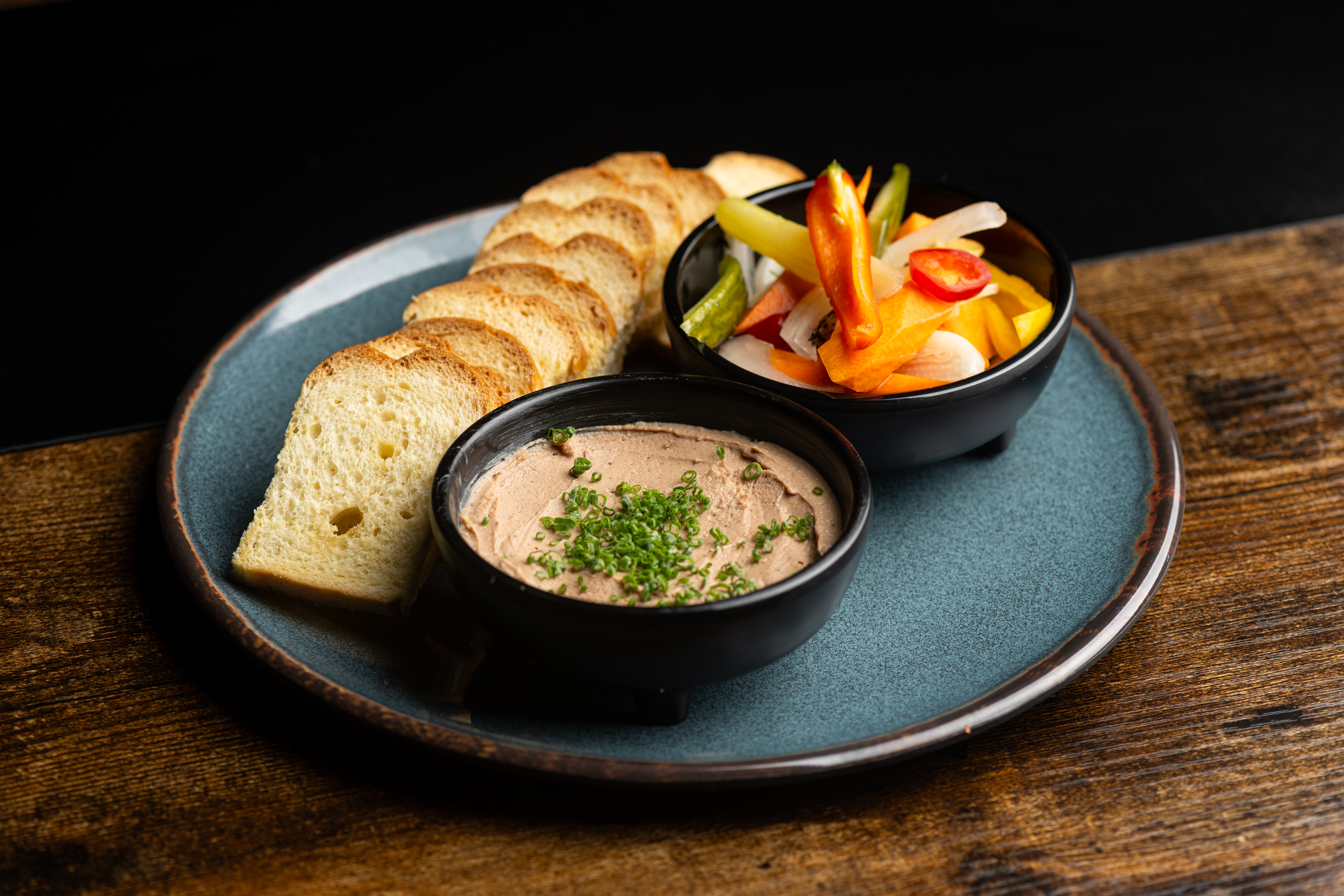
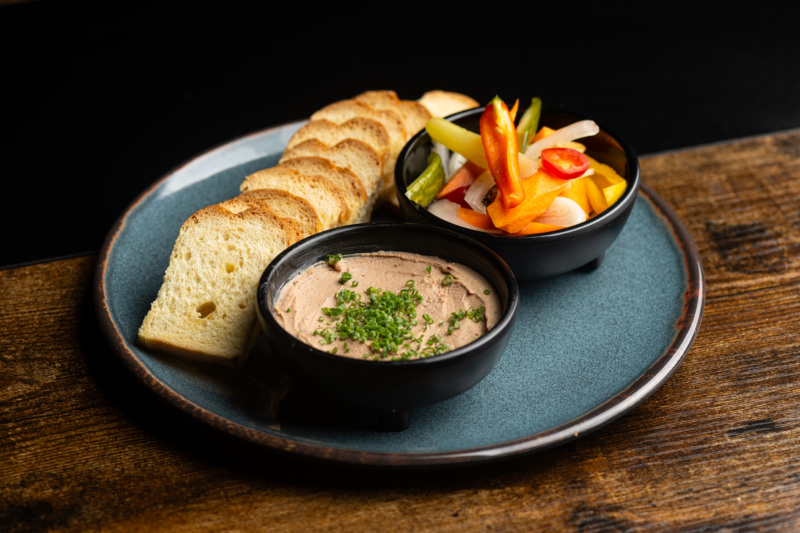
In an industry currently starved for high-end, accomplished talent, Nguyen could be cooking just about anywhere he wants. I was, quite frankly, surprised to see him at the Airliner. In the more recent history of its 100 years, the Airliner had become a real dive. It was better known for hosting the legendary hip hop and dance music club night, Low End Theory, from 2006 to 2018 than it was for cranking out great food and drink. It was also, notoriously, featured as a deeply imperiled fixer-upper on a 2018 episode of “Bar Rescue.” In fact, the bar was out of operation before Nguyen and his partners renovated and reopened it in the fall of 2023.
What’s clear is Nguyen is pleased to be cooking for the hoi polloi again having spent most of the pandemic years private cheffing for Tinseltown’s rich and famous. He’s amassed a team of contributing fellow chef’s chefs in the kitchen. The food they serve is influenced by their collective personal and professional experiences with Nguyen at the helm. The baseline is Asian and touches China, Japan, Vietnam, Thailand, Indonesia, and South Korea, though you’ll see some elements of Latin America mixed in too – a reflection of both the kitchen team and the surrounding neighborhood’s cultural makeup. (Lincoln Heights is a working class, predominantly Latin and Asian area.)
This is what I want to do. It’s really all I’ve ever wanted to do.— Vinh Nguyen
I’ve compiled nerdy notes in my head about how sneakily chef-driven the Airliner’s food is. I could drone on about how they make just about everything in-house, like their Szechuan pepper málà hot sauce. I could describe Nguyen’s hack for mimicking the signature wok hay aroma and flavor you get from stir frying in a hot wok without using the actual equipment. But I won’t bore you. Just know that well-sourced ingredients, fermentations, multi-day cooking methods, and high culinary techniques abound in a tiny kitchen that’s better suited to short-order line cooks griddling up burgers and pancakes.
But what’s most important is that I tell you this: The food at the Airliner is simply, completely delicious.
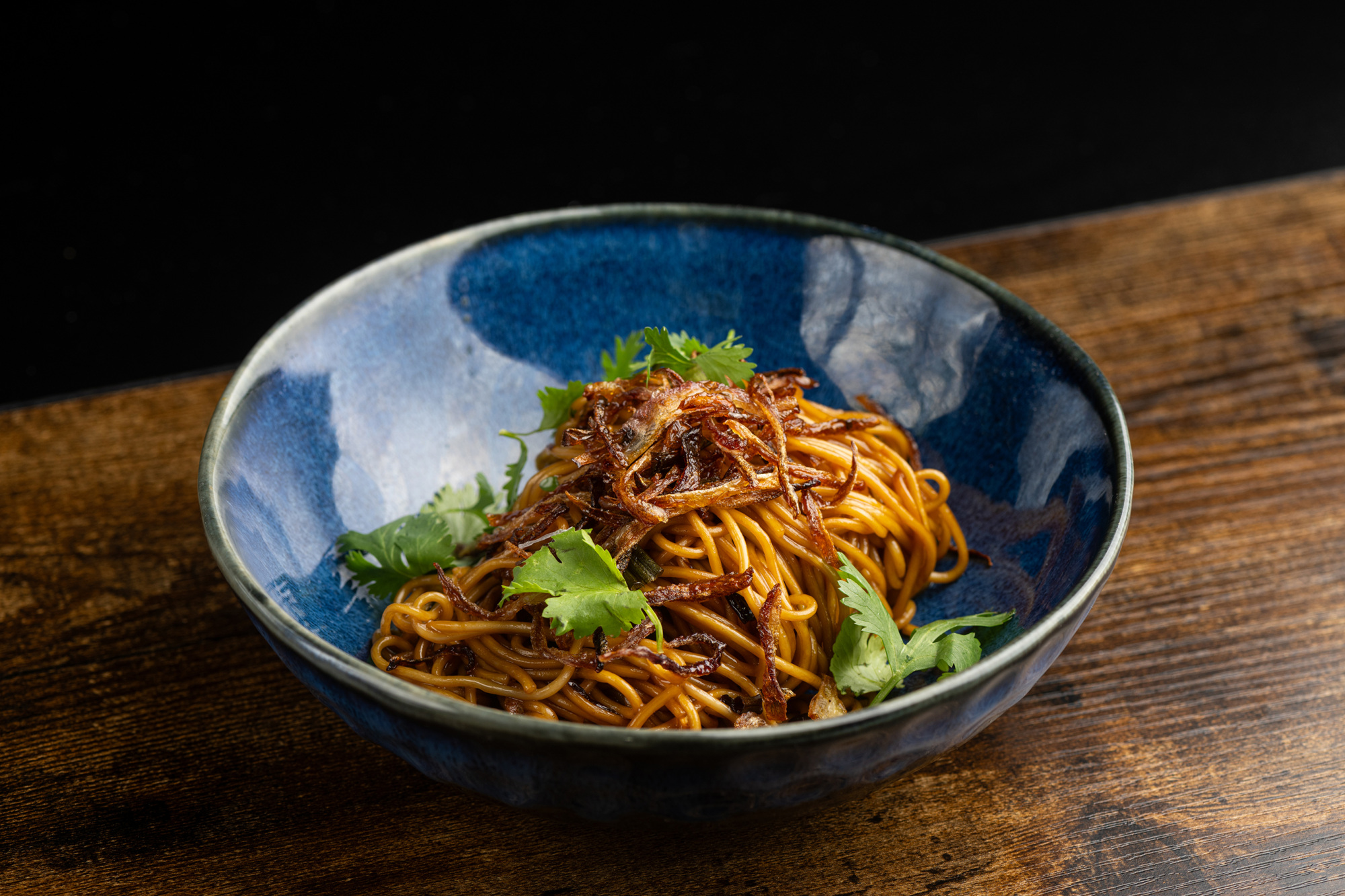
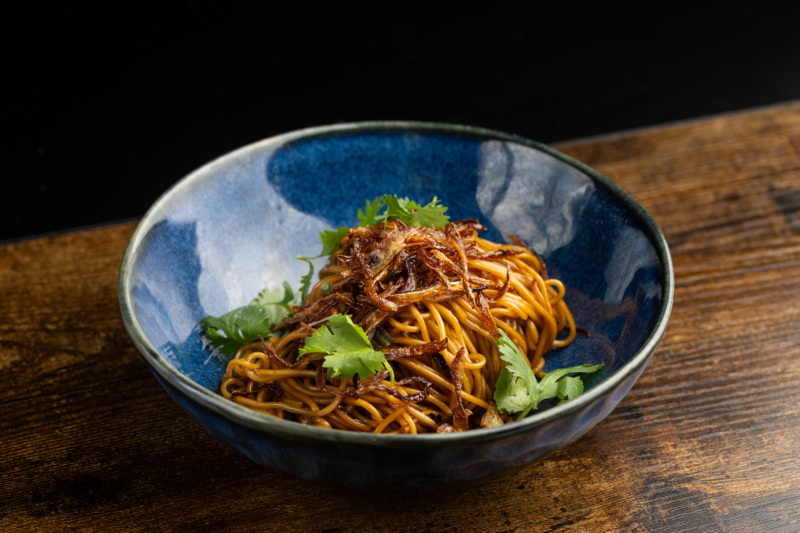
There’s the silky smooth chicken liver paté suffused with pho spices, mashing up Brooklyn’s Marlow & Sons’ famed chicken liver mousse recipe with Mama Nguyen’s beefy soup. The Hunan BBQ pork ribs are tender, but with the right amount of toothsome. They’re cumin-forward with a spicy peppered finish, and are a recreation of the ribs Nguyen and his wife devoured frequently at Di Shui Dong in Shanghai. Also, from Shanghai are the triple-onion noodles, a simple, though deeply flavored punch of alliums that’s an ode to the cong you ban mian street vendor Nguyen used to bike to every night after his shift.
The salmon tataki crispy rice lives up to its name with heaping portions of fatty salmon tartare, indulgent fish roe and cuttingly bright shiso leaves spooned atop a deep-fried, satisfyingly crunchy round of seasoned sushi rice. The citrus salad is a balance of tart (sliced grapefruit and green mango), herbaceous (mint, Thai basil, cilantro) and umami (nước chấm dressing) that reminds me of gỏi, a Vietnamese salad flavored with fish sauce that’s requisite for any proper nhậu. To finish, the hōjicha tres leches is my favorite – thin chocolate feuilletine crepes stacked and drenched in a green tea-rich milky sauce carrying a hint of malty flavor that comes from toasted rice powder.
Looking around at it now after looking back at all, I ask Nguyen basically, Why this? Why here? Why now?
“This is what I want to do. It’s really all I’ve ever wanted to do,” he says. “I want a neighborhood spot that’s open for everyone. I’m cooking my favorite dishes, stuff I love to eat. You could say some of the dishes are from my ‘greatest hits’ collection. I want to serve great food, great drinks at a fair price. It’s really just about taking care of people. That’s it.”
Khuong Phan is a former newspaper reporter turned hospitality industry professional who’s been in the employ of a variety of chefs, restaurants, and hotels over the years.


